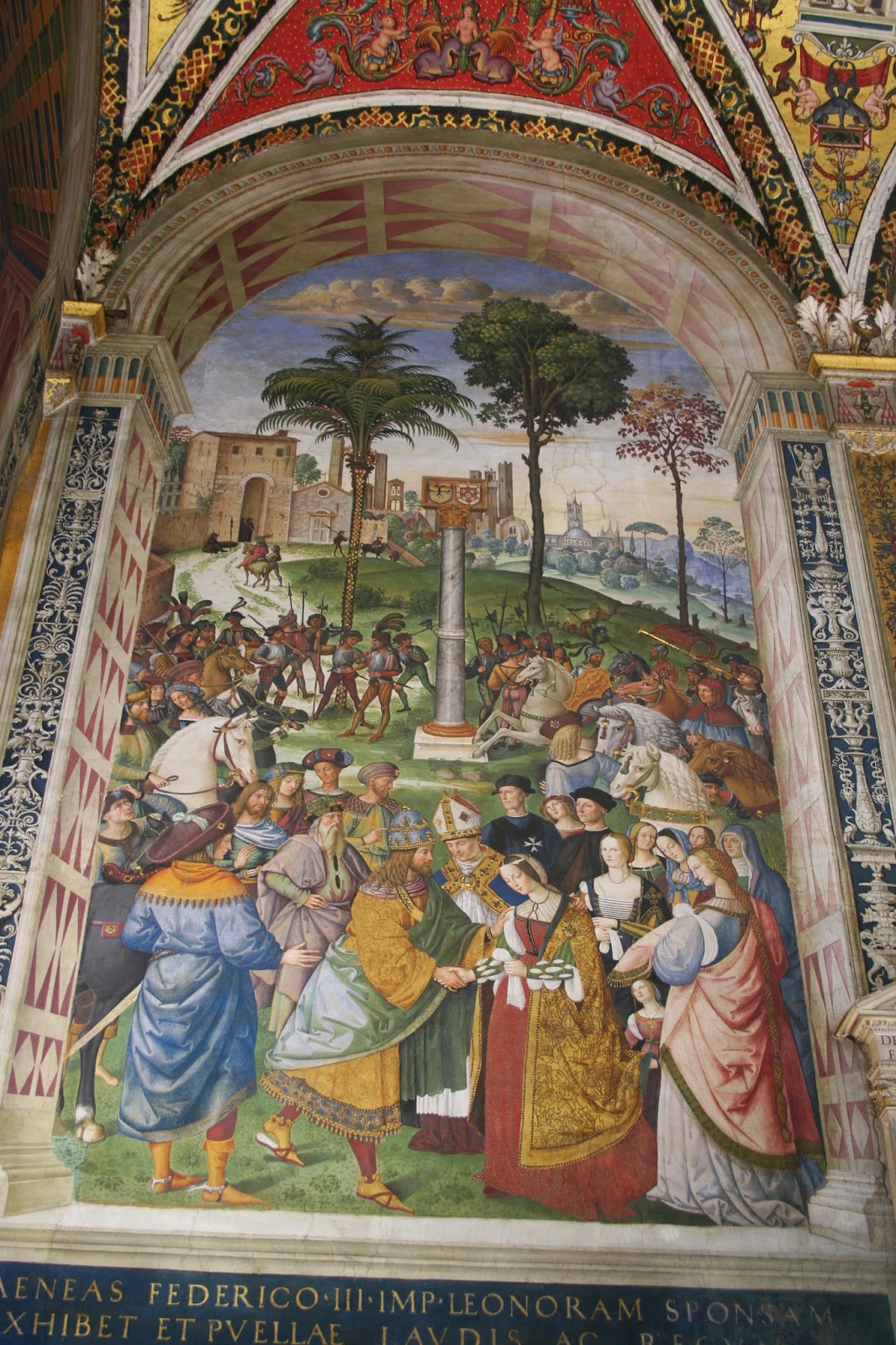The Villa Medici at Poggio a Caiano was built by Lorenzo de 'Medici and his heirs between 1485 and 1520, with a likely break between 1495 and 1515 due to the exile of the Medici. It was always the summer residence of the Medici and, in addition to hosting numerous personalities. was the scene of important events in their history, such as the celebration of the marriage of Alessandro de 'Medici and Margaret of Austria (1556), Cosimo I and Eleonora of Toledo (1559), Francis I and his mistress Bianca Cappello already (in 1579 ). The Villa was a necessary step for all new brides Grand Ducal, who before his visit here in the city receiving the homage of the Florentine nobility and the case of Joan of Austria, first wife of Francis I and Christine of Lorraine, wife Ferdinand I. In the Villa di Poggio, in October 1587 found the same death Francis I and Bianca Cappello, one a day away from the other, for tertian fever, although the oral tradition through the rumor that they were both dead for poisoning by his brother Ferdinand, and his successor, Cardinal Grand Duchy of Tuscany. The villa is a splendid example of Renaissance architecture that blends classicism with characteristic elements of stately Tuscan rural The interior of the villa is rich in history, frescoes, furniture belonged to the Savoy family. There is also a small theater. It is surrunded by a park of nine hectares. At the time of the Medici family, the whole park was neat and cultivated, except the front, because in this area there came the carriages. They were a vineyard, an orchard and several groves. Right next to the villa is the first kind limonaia Tuscan lemons were and are still grown in large earthenware bowls and winter are put away in the greenhouse. Opening hours to the public: January, February, from 9.00 a.m to 3
.30 p.mMarch from 9.00 a.m to 4
.30 p.mApril, May, from 9.00 a.m to 5
.30 p.mJune, July, August from 9.00 a.mto 18.30 p.m
September from 9.00 a.m to 5
.30 p.mOctober from 9.00 a.m to 4
.30 p.mNovember, December from 9:00 am to 15:30 pm Closed on the 2nd and 3rd Monday of the month. Admission is free. How to reach Poggio a Caiano: take A1 direction Florence, exit at Firenze Scandicci, take the SGC Pisa-Livorno. Follow the signs to Lastra a Signa, Signa and then finally Poggio a Caiano. The villa is located in the center of the country.
La Villa Medicea di Poggio a Caiano fu fatta edificare da Lorenzo de' Medici e dai suoi eredi tra il 1485 e il 1520 circa, con una probabile pausa tra il 1495 e il 1515 dovuta all'esilio dei Medici.
Essa rimase sempre la residenza estiva dei Medici e, oltre ad ospitare numerose personalità. fu teatro di importanti avvenimenti della loro storia dinastica, come i festeggiamenti per i matrimoni tra Alessandro de' Medici e Margherita D'Austria ( 1556), Cosimo I ed Eleonora da Toledo (1559), Francesco I e Bianca Cappello già sua amante (1579).
La Villa di Poggio era passaggio obbligato per tutte le nuove spose granducali, che prima di recarsi in città ricevevano qui l'omaggio della nobiltà fiorentina: e il caso di Giovanna D'Austria, prima moglie di Francesco I e di Cristina di Lorena, moglie di Ferdinando I.
Nella Villa di Poggio, nell'ottobre 1587, trovarono la morte gli stessi Francesco I e Bianca Cappello, l'una a un giorno di distanza dall'altro, per febbre terzana, anche se la tradizione orale tramandò la diceria che fossero morti entrambi per avvelenamento da parte del fratello Ferdinando, cardinale e suo successore al Granducato di Toscana.
La villa è uno splendido esempio di architettura rinascimentale, che fonde il classicismo con elementi caratteristici dell'architettura signorile rurale toscana
L'interno della villa è ricco di storia, di affreschi, di mobilio appartenuto alla famiglia Savoia. Vi si trova, inoltre, anche un piccolo teatro.
E' circondata da un parco di nove ettari. Al tempo della famiglia dei Medici, tutto il parco era ordinato e coltivato, eccetto la parte antistante, in quanto in questa zona vi arrivavano le carrozze. Si trovavano un vigneto, un frutteto e boschetti vari. Proprio vicino alla villa è sorta la prima limonaia toscana: i limoni venivano e, vengono tutt'oggi, coltivati in grosse conche di coccio ed in inverno vengono messi al riparo nella limonaia.
Orario apertura al pubblico:
|
| Gennaio, Febbraio | dalle ore 9,00 alle ore 15,30 |
| Marzo | dalle ore 9,00 alle ore 16,30 |
| Aprile, Maggio | dalle ore 9,00 alle ore 17,30 |
| Giugno, Luglio, Agosto | dalle ore 9,00 alle ore 18,30 |
| Settembre | dalle ore 9,00 alle ore 17,30 |
| Ottobre | dalle ore 9,00 alle ore 16,30 |
| Novembre, Dicembre | dalle ore 9,00 alle ore 15,30 |
Chiuso il 2° e 3° lunedì del mese.
Ingresso gratuito.
Come raggiungere Poggio a Caiano: prendere A1 direzione Firenze, uscire a Firenze Scandicci, proseguire sulla S.G.C ( strada Grande Comunicazione) Pisa-Livorno. Seguire le indicazioni per Lastra a Signa, poi Signa ed infine Poggio a Caiano. La villa è collocata nel centro del paese.

























